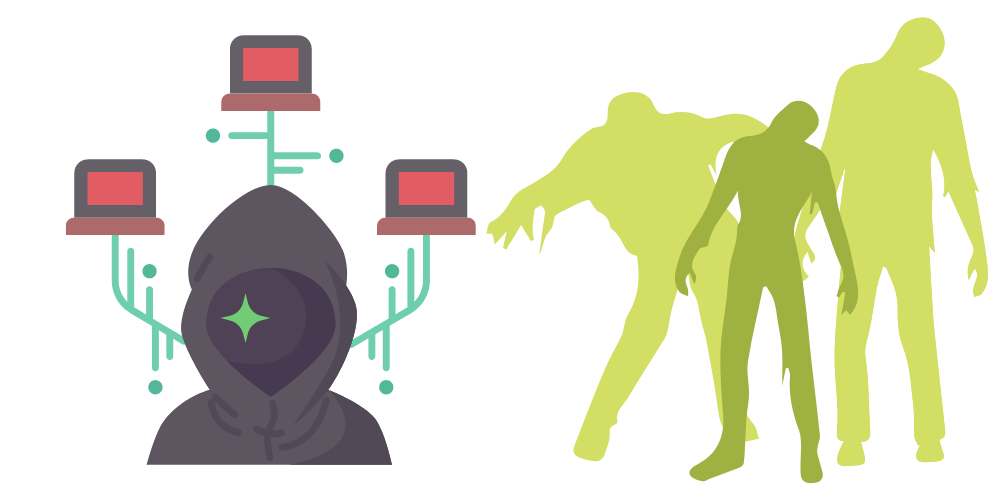
Botnets and Zombies: The Dark Army of the Digital World
In the complex landscape of cybersecurity, the terms "botnets" and "zombies" represent formidable threats that have the potential to wreak havoc on a global scale. These interconnected networks of compromised computers serve as powerful tools for cybercriminals and threat actors, enabling a range of malicious activities, including DDoS attacks, data theft, and the propagation of malware. Understanding what botnets and zombies are, how they operate, and the methods to defend against them is essential for safeguarding digital infrastructure and data.
Botnets: A Network of Compromised Devices
A botnet, short for "robot network," is a collection of compromised computers, known as "bots" or "zombies," that are under the control of a central command and control (C&C) server operated by an attacker. These bots can number in the thousands or even millions and are typically infected with malware that allows the attacker to remotely control them.
Key Aspects of Botnets:
- Infection and Recruitment: Botnets are formed by infecting a large number of computers with malware. This malware typically includes a "bot" component that establishes a connection with the C&C server.
- Command and Control: The C&C server serves as the mastermind behind the botnet, sending instructions to the compromised devices. These instructions can range from initiating DDoS attacks to stealing sensitive data.
- Distributed Denial of Service (DDoS) Attacks: Botnets are commonly used to launch DDoS attacks, overwhelming target websites or networks with a massive volume of traffic, rendering them inaccessible.
- Spam and Phishing: Botnets are also used for distributing spam emails and phishing campaigns, exploiting their vast network to send malicious messages or deliver malware payloads.
- Data Theft: Some botnets are designed to steal sensitive information, such as login credentials or financial data, for financial gain or espionage.
Zombies: Compromised and Controlled Computers
Zombies, in the context of botnets, are individual computers or devices that have been compromised by malware and are now under the remote control of an attacker. These devices can include personal computers, servers, smartphones, IoT devices, or any internet-connected device susceptible to infection.
Key Characteristics of Zombies:
- Silent Operation: Zombies typically operate silently and covertly, with users often unaware that their device has been compromised.
- Remote Control: Attackers can send commands to zombies to carry out various malicious activities, such as participating in DDoS attacks, sending spam, or stealing data.
Preventing and Mitigating Botnets and Zombies:
- Security Software: Use reputable antivirus and anti-malware software to detect and remove malware that can turn your device into a zombie.
- Regular Updates: Keep your operating system, software, and security tools up-to-date to patch known vulnerabilities.
- Network Security: Implement network security measures, including firewalls and intrusion detection systems, to detect and block botnet activity.
- User Education: Educate users about the risks of clicking on suspicious links, downloading files from untrusted sources, and practicing safe online behavior.
- Behavioral Analysis: Employ tools that monitor network traffic and user behavior to detect anomalies that may indicate the presence of botnet activity.
- Incident Response Plan: Develop a comprehensive incident response plan that outlines the steps to take if your network is compromised by a botnet. This plan should include procedures for containment, eradication, and recovery.
Conclusion
In conclusion, botnets and zombies are powerful and pervasive threats in the digital world. By understanding their nature and the methods used to defend against them, individuals and organizations can better protect themselves from falling victim to the malicious activities orchestrated by these digital armies.